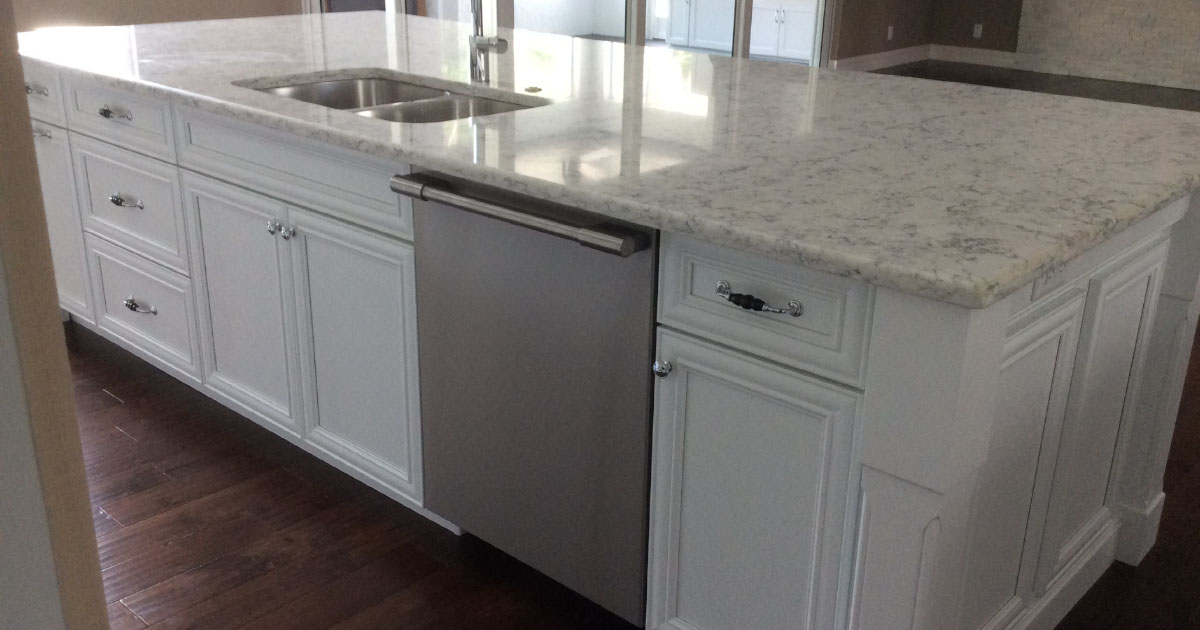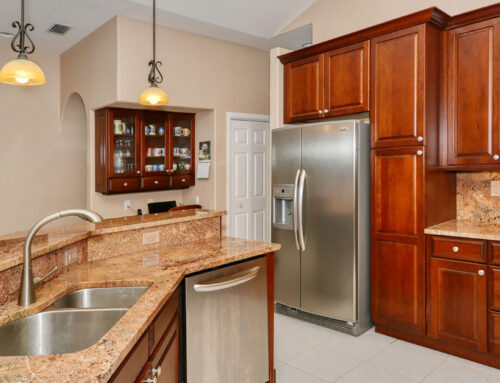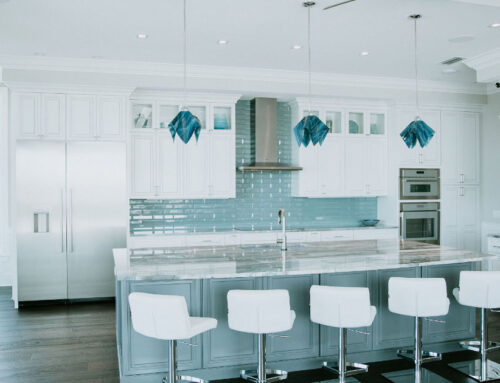You spend a lot of time in your kitchen–reading recipes, preparing meals, entertaining guests, and performing other daily activities like doing homework and cleaning. If it is poorly lit, it’s easy to become frustrated or to strain your eyes as you read and focus on your meal prep. Therefore kitchen lighting design is important as you renovate this space. Here are tips meant to ensure your kitchen is well lit so that your eyes don’t suffer and it is a bright, inviting room for everyone who enters.
Lighting Design: The Magic Three
In kitchen design, the lighting elements are generally divided into three main types–task lighting, ambient lighting, and accent lighting. Each is meant to fulfill a different purpose and provide lighting in different ways, but they are all important to incorporate so that each area of your kitchen is well-lit for safety as well as comfort and style.
Have you ever bent over a drawer or counter and had difficulty seeing because of the annoying shadows? Task lights solve this issue. These are small lights that are installed on the underside of cabinets or hung above certain areas to better light your workspaces. You will notice a huge difference, and never want to go back to a kitchen without task lighting! Battery-powered strip or puck lights are excellent to put in when you have counters with overhanging cabinets. Whether you’re chopping veggies or your kid is doing math homework, your eyes will thank you for brightening the area. For isolated areas like butchers’ blocks or islands, try hanging multiple small pendant lights–they’ll help provide even lighting to that particular area.
Ambient lighting is the main source of overhead light in your kitchen. However, you can improve it by increasing the height and number of ambient lights you have, as this will distribute the light more evenly throughout the room. The higher the light is, the farther the light will spread; this is why ceiling-mounted lights or recessed fixtures are the most common ambient ambient lights. Install the lights along the same axis as your counters so that each corner is illuminated. For designated areas like dining rooms, a beautiful, bright chandelier often serves this purpose. Dimmers are a smart addition to ambient lighting so that you can adjust the brightness to fit the mood of the evening and conserve energy when you can.
Accent lights are the finishing touch that pull together the room’s ambience. These are lights that highlight different parts of your kitchen–whether that is a statement chandelier or pendant light over your dining table, recessed above-cabinet lighting to add some dramatic flair, or foot lights that run along the trim of your lower cabinets for a luxurious guide through your space.
When designing your kitchen’s lighting, strive for a balance of these three essential elements. An ordinary kitchen can be transformed into a beloved and flexible workspace in your home with the proper illumination. There is a huge variety of light fixture designs to fit any style kitchen. Step up your kitchen with lighting that will bring your room together for a “wow” factor that will leave your guests thoroughly impressed.
Do you know the difference between interior decorators and interior designers? Read more here, and then call West Coast Design Build Florida to discuss your Sarasota kitchen renovation.




[…] a New Lighting Scheme: Lighting is essential when designing a modern kitchen. It adds inviting ambiance and warmth and specific task lighting to combine the very best in […]
[…] their prep areas, for instance. By employing brighter illumination, angled lights, or other task lighting alternatives, under-cabinet lights, work areas will be well-lit and ready for any kitchen job. Targeted hood […]